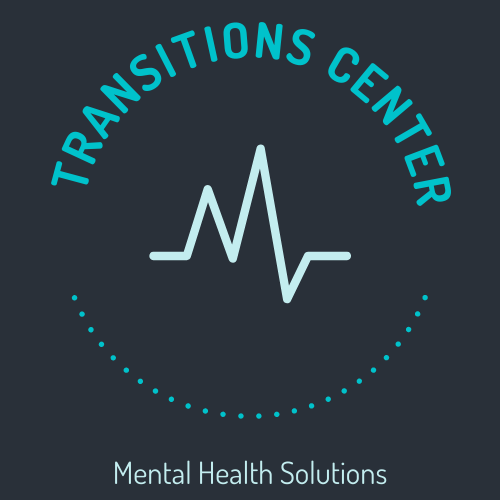Introduction: The Importance of Addressing Workplace Mental Health
Mental health is a critical aspect of overall well-being, and it can have a significant impact on an individual’s personal and professional life. In recent years, workplace mental health has gained increased attention as employers recognize the importance of creating a healthy work environment for their employees. The workplace can be a source of stress, anxiety, and other mental health challenges, which can affect employee performance, job satisfaction, and overall productivity. Employers have a responsibility to create a safe and supportive work environment that prioritizes the mental health of their employees. In this article, we will explore five solutions for employers to address workplace mental health and promote a positive and productive workplace culture.
Solution #1: Establish a Safe and Supportive Work Environment
Establishing a safe and supportive work environment is a critical step in promoting workplace mental health. Employees who feel safe and supported at work are more likely to be productive and engaged, and less likely to experience mental health challenges. Employers can take several steps to create a safe and supportive work environment, including:
1. Promoting A Culture Of Respect And Inclusivity: Employers can create a culture that values diversity, equity, and inclusion, and actively works to combat discrimination and harassment.
2. Providing A Physically Safe Workplace: Employers can ensure that the workplace is free from physical hazards and that employees have access to ergonomic workstations and other tools to promote their physical health.
3. Offering Employee Support Programs: Employers can offer employee support programs such as an employee assistance program (EAP) that provides confidential counseling and support to employees.
4. Encouraging Work-Life Balance: Employers can support employees in achieving a healthy work-life balance by offering flexible work arrangements, paid time off, and other benefits that promote overall well-being. By establishing a safe and supportive work environment, employers can create a workplace culture that supports the mental health and well-being of their employees.
Solution #2: Encourage Open Communication and Reduce Stigma
Encouraging open communication and reducing stigma surrounding mental health is another critical solution for employers to address workplace mental health. Employees may be hesitant to speak about their mental health concerns for fear of negative consequences such as discrimination or job loss. Employers can take several steps to encourage open communication and reduce stigma, including:
1. Educating Employees: Employers can provide education and training on mental health to help employees understand the importance of seeking help and reduce the stigma associated with mental health concerns.
2. Normalizing Mental Health Conversations: Employers can encourage open conversations about mental health and provide safe spaces for employees to discuss their mental health concerns without fear of judgment.
3. Providing Confidential Resources: Employers can offer confidential mental health resources such as counseling, hotlines, and mental health apps to encourage employees to seek help when needed.
4. Providing Accommodations: Employers can work with employees to provide reasonable accommodations for their mental health concerns, such as flexible work schedules or modified workloads.
By encouraging open communication and reducing stigma surrounding mental health, employers can create a culture of acceptance and support that prioritizes employee mental health and well-being.
Solution #3: Provide Mental Health Benefits and Resources
Providing mental health benefits and resources is a critical solution for employers to address workplace mental health. Mental health benefits can help employees access the care they need to manage their mental health concerns, reducing the negative impact on their work performance and overall well-being. Employers can take several steps to provide mental health benefits and resources, including:
1. Providing Health Insurance Coverage For Mental Health Services: Employers can offer health insurance plans that cover mental health services such as therapy and medication.
2. Offering Mental Health Programs: Employers can offer mental health programs such as stress reduction workshops, mindfulness training, and resilience training to help employees manage their mental health.
3. Providing Mental Health Resources: Employers can provide mental health resources such as online self-help tools, mental health apps, and educational resources to help employees learn more about mental health and how to manage their mental health concerns.
4. Partnering With Mental Health Providers: Employers can partner with mental health providers to offer on-site counseling or telehealth services to employees.
By providing mental health benefits and resources, employers can support their employees’ mental health and well-being, reducing the negative impact of mental health concerns on their work performance and overall quality of life.
Solution #4: Promote Work-Life Balance and Flexible Schedules
Promoting work-life balance and flexible schedules is a crucial solution for employers to address workplace mental health. When employees feel overworked and stressed, it can lead to mental health concerns such as burnout and reduced job satisfaction. Employers can help to alleviate these concerns by offering flexible work arrangements such as telecommuting, job sharing, and compressed workweeks. Encouraging regular breaks and vacations is also an effective way to prevent burnout and allow employees time to recharge.
Additionally, setting reasonable expectations for workloads and deadlines can reduce stress and prevent overwork. Providing paid time off for personal or family needs, such as sick days or parental leave, can also help employees manage their personal responsibilities. By promoting work-life balance and flexible schedules, employers can create a supportive work environment that prioritizes the mental health and well-being of their employees, leading to increased productivity and job satisfaction.
Solution #5: Train Managers and Supervisors to Recognize and Respond to Mental Health Concerns
Training managers and supervisors to recognize and respond to mental health concerns is a vital solution for employers to address workplace mental health. As frontline leaders, managers and supervisors are often the first point of contact for employees who are experiencing mental health concerns.
Employers can take several steps to train managers and supervisors to recognize and respond to mental health concerns. This includes providing education and training on how to recognize the signs and symptoms of mental health concerns, how to provide support to employees, and how to refer employees to appropriate resources. Encouraging open and supportive communication between managers and employees about their mental health concerns can also be helpful. Employers can provide resources and support to managers and supervisors, such as access to an employee assistance program or mental health training resources.
Regular check-ins with employees can also be helpful in assessing their well-being and addressing any mental health concerns. By training managers and supervisors to recognize and respond to mental health concerns, employers can create a supportive work environment that prioritizes employees’ mental health and well-being, leading to increased productivity, engagement, and job satisfaction.
Conclusion: Taking Action To Prioritize Workplace Mental Health
In conclusion, addressing workplace mental health is critical for the well-being of employees and the success of organizations. Employers can take several solutions to prioritize workplace mental health, including establishing a safe and supportive work environment, encouraging open communication, providing mental health benefits and resources, promoting work-life balance and flexible schedules, and training managers and supervisors to recognize and respond to mental health concerns.
By implementing these solutions, employers can create a work environment that supports the mental health and well-being of their employees, leading to increased productivity, engagement, and job satisfaction. It’s essential for employers to take action and prioritize workplace mental health to promote a healthier work culture and improve the lives of employees.
About the Authors
Transitions Center for Natural Mental Health Treatments for a variety of physical and mental dependency issues and conditions. Substance use disorders are difficult to understand for many people. The physical and mental aspects of any substance disorder are complicated and unique to the individual suffering. The differences between physical and psychological dependency vary but have some similarities. Transitions Center for Natural Mental Health Treatments help the public know what to look for as a means of helping a loved one cope with the challenges of mental health disorders.
This post was created with the assistance of CBD online companies. At Mary Jane’s CBD Dispensary, they are passionate about providing their customers with the best quality products and services. Not only do they offer a variety of top-notch CBD Hemp products for you to choose from, but also Naturopathic treatments for physical disabilities or mental illnesses. They want everyone who comes through their online doors to leave feeling refreshed and healthy so they can live their lives on their own terms. Get in touch if you have any questions!

